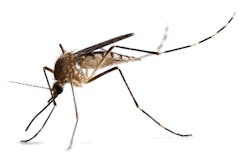In August 2012, I investigated a catch basin in the City of San Leandro, CA, that I had inspected for mosquito production many times before. To my surprise, I saw a metal screened box bolted to the wall of the basin covering the outlet pipe. I walked to another catch basin and there was another one, and then another. What were these things, and why were they there?
Trash capture devices (TCD) are installed in catch basins to prevent trash from flowing into creeks, canals, and bays. These devices are a byproduct of the federal Clean Water Act and similar state regulations. Trash capture is a prominent issue in the San Francisco Bay Area as the region set ambitious goals to reduce trash entering waterways, and by 2030 the mandate will be fully implemented statewide in California.
While TCDs come in many shapes, configurations, and designs to maximize trash capture performance, an unintended and problematic consequence is that many pose substantial problems for inspecting and treating catch basins for mosquito larvae without completely dismantling the device. With tens of thousands of catch basins in Alameda County that need to be inspected and treated several times in a season, we quickly realized the profound impact TCDs would have on our ability to control mosquitoes and protect public health.
I attempted to contact city and county offices to track down the origin of these devices. I finally got a lead when I was provided contact information for a device manufacturer. I informed the manufacturer that the device was problematic for inspecting and treating mosquitoes and expressed hope that there was a solution to the problem. However, I was told that the device was installed to capture trash and was approved by the state to do so.
It was clear we needed a new approach. Obviously, TCDs were here to stay. So how do we get TCDs to protect both water quality and public health?
Our solution was a flyer on mosquito abatement in catch basins, listing which TCDs were acceptable and unacceptable for mosquito inspections and treatments. One of our largest cities and a device manufacturer contacted us because their devices were on our “unacceptable” list. We worked together on modifications to make the devices acceptable to our operations and the California State Water Resources Control Board. We then attended several conferences focused upon water use and advocated our position on TCDs. As a result, more cities and manufacturers made modifications to move their TCDs from the unacceptable list.
We finally gained some traction. In 2017, I gave presentations at the annual Mosquito and Vector Control Association of California (MVCAC) conference and the annual conference of the California Stormwater Quality Association (CASQA). I discussed the need for municipalities, planners, and agencies to communicate with their local mosquito and vector control districts before installing TCDs or other stormwater management and treatment devices.
In late October 2017, the State Water Board reached out to begin discussions of TCDs and our operations. We met over the winter, along with the MVCAC, for an in-depth conversation and review of devices in the field. This collaboration has been very fruitful as we work towards the common goal of assisting municipal storm sewer system permittees in selecting suitable devices and developing a minimum vector control accessibility standard for the state.
It has been rewarding to see years of effort come to fruition. Our efforts to protect public health and reduce the risk of mosquito-transmitted diseases continue to evolve and expand as we increase our efforts to educate agencies, municipalities, and members of the community that their decisions involving stormwater runoff management can have a profound impact on mosquito abundance and control. The importance of these efforts is not confined to a certain region, and as such, we have expanded our message on the importance of multifunctional TCDs nationwide.Joseph Huston
Joseph Huston is field operations supervisor with the Alameda County Mosquito Abatement District.







